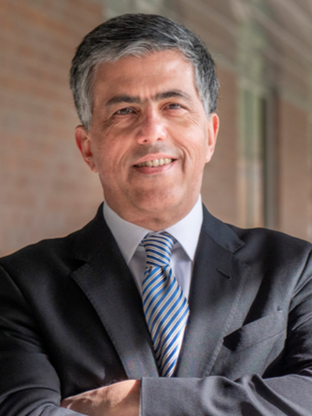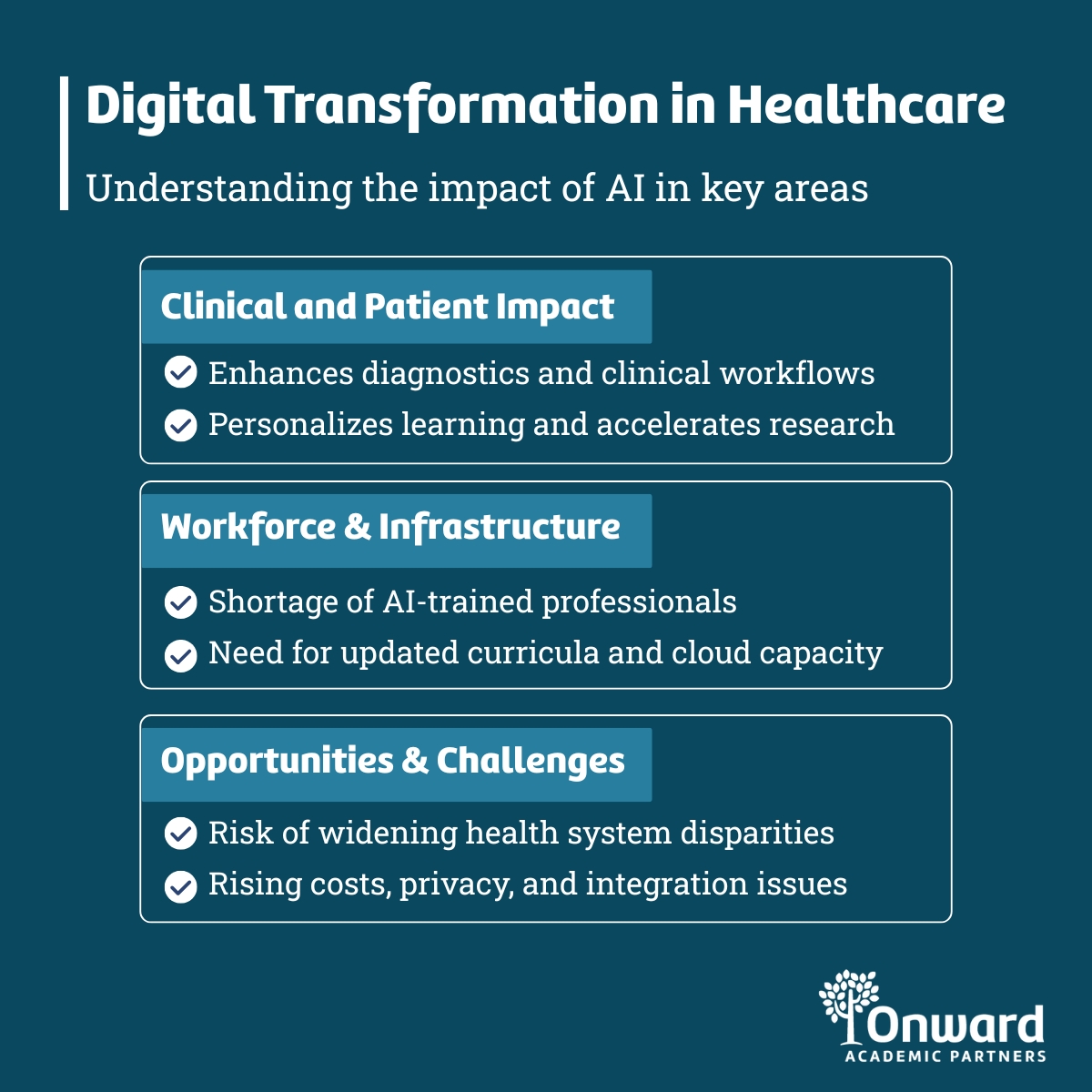Rooted Interests with
Umberto Tachinardi, MD, MS
Umberto Tachinardi, MD, MS
Rooted Interests with Umberto Tachinardi, MD, MS
How AI is impacting healthcare and clinical research
Onward Academic Partners had the opportunity to sit down with Umberto Tachinardi, MD, MS, who currently serves as the Chief Digital Officer at the Cincinnati College of Medicine and UC Health.
Our discussion covers a wide range of topics highlights his perspective on the impact of technology across the healthcare landscape. This conversation focuses on digital transformation and the role AI will play in clinical care, research, and patient experience. Dr. Tachinardi also provides insight into how these changes impact the workforce, including training, education, and the decisions leaders face in building an infrastructure for sustained growth.

Dr. Umberto Tachinardi
Where do you see AI being most commonly applied today in clinical care, research, and education?
AI is becoming ubiquitous, much faster than anyone anticipated, especially after the rise of large language models. In clinical care, radiology for example, AI has been a game changer. Clinicians are using AI for image analysis, to detect borders, to identify objects of interest and automate tasks that were previously manual, leading to faster and more accurate diagnoses. Some things are so nuanced that the human eyes alone cannot tackle. AI technologies help extract more information than ever. And it’s not displacing the humans, it’s actually helping them be more efficient, more more productive.
In research, the availability of massive datasets allows for new analytical methods, enabling researchers to identify patterns and trends that were previously impossible to detect. In education, AI supports a new kind of teaching called “precision education”. We can track student performance in real time to ensure comprehensive exposure to necessary content and better learning outcomes. AI allows us to see what they are exposed to in terms of content. What was the variety of content in their training? What exactly are they learning, and are they improving how they think and perfect their conclusions?
How has the development of generative AI and large language models changed the landscape?
Generative AI, like ChatGPT, has made the benefits of AI more accessible and understandable to the broader public. These models learn from vast amounts of text data, mimicking human communication and generating text, which is particularly useful in clinical documentation and patient interactions. However, AI is much more than ChatGPT and CoPilot. AI encompasses other techniques like deep learning and machine learning now.
Can you give an example of AI improving clinical workflows today?
One major advancement is “ambient notes,” where a microphone records conversations between clinicians and patients. AI transcribes, analyzes, and extracts relevant codes or insights for diagnoses and therapies. This technology allows clinicians to focus more on patient interaction rather than typing notes, improving both patient and physician experience. Transitioning to this system requires adaptation and retraining for clinicians and students however. Clinicians need to think about how they document what they are doing differently.
How is AI changing research in healthcare?
Researchers now have access to vast amounts of data, including unstructured data like narratives. AI enables the analysis of these large datasets, finding patterns and generating new research questions on the fly. This is a shift from the past, where data collection was so resource-intensive that researchers had to perfect their hypotheses before starting. Now, data is abundant and can be reused, allowing for more exploratory and iterative research. Instead of asking one perfect question, the researcher can ask numerous questions almost simultaneously.

What are some of the challenges or negative impacts of AI in healthcare?
One significant concern is the potential for AI to increase disparities between large, well-resourced healthcare systems and smaller organizations that simply can’t afford the technology investment. Other challenges include privacy, confidentiality, cybersecurity, and the complexity of integrating multiple technologies. However, the cost of cloud computing for AI, and this goes for research as well, is a rapidly growing expense. In the past, a system could buy some new servers, enhance memory of their current servers, etc. Those days are gone.
Is there enough workforce being trained to meet the growing demand for AI expertise in healthcare?
No, current training programs, including PhDs and fellowships, are not producing enough experts to meet demand. Beyond training more informaticians and digital leaders, it’s crucial to raise digital literacy across all roles in healthcare, as AI will impact everyone, not just clinicians. Jobs will change for everyone working in healthcare.
What should academic leaders and deans prioritize when investing in AI for medical schools?
Priorities should include:
- Building the right infrastructure, especially for secure and affordable cloud computing.
- Updating curricula to ensure students are prepared for a future where AI is integral to clinical practice and research.
- Ensuring the sustainability of investments, as adopting AI will increase costs in already expensive medical training of our students.
What is your perspective on how leaders in academic medicine discuss AI challenges?
There is often a tendency among technology leaders to focus on successes and present an overly optimistic view, while real challenges and issues may be downplayed or ignored. In reality, most institutions are facing significant difficulties in adapting to the rapid changes brought by AI.

Rooted Insights is an engaging interview series that brings you candid conversations with some of the most dynamic leaders in academic medical administration. Over the years, I’ve had the privilege of learning from and collaborating with these remarkable individuals, and now, we’re sharing their insights and experiences directly with you.
Each interview offers a concise yet impactful perspective on timely and relevant issues in their area of expertise across academic medicine. Whether seeking new ideas, professional inspiration, or development guidance, these conversations are designed to spark your curiosity.
If you’d like to dive deeper, please contact me directly and we can continue the conversation.
Sit back and enjoy this series!

